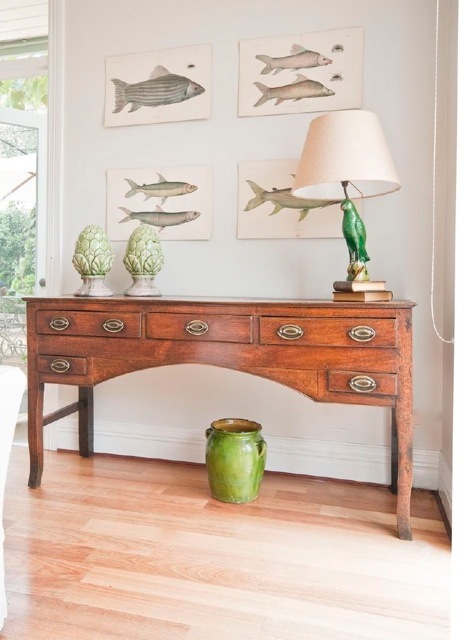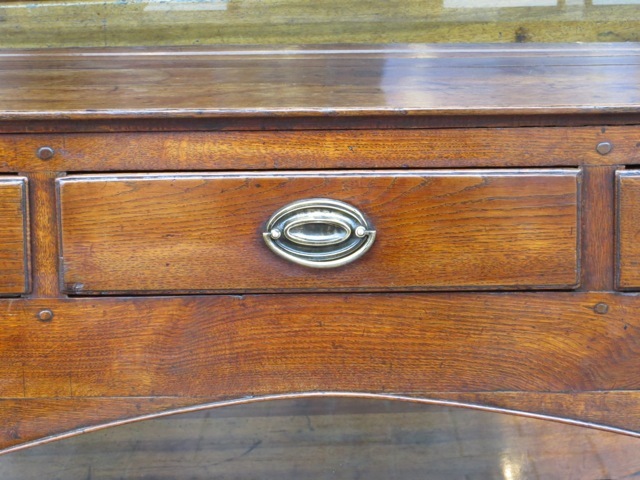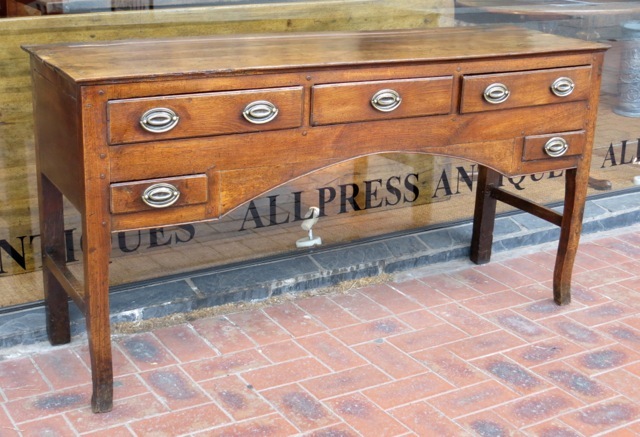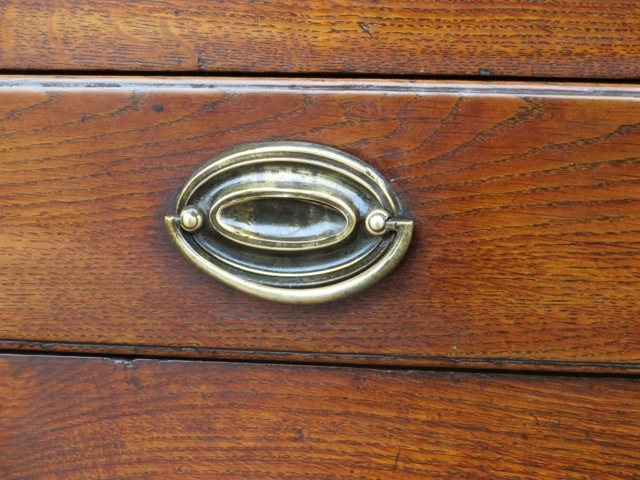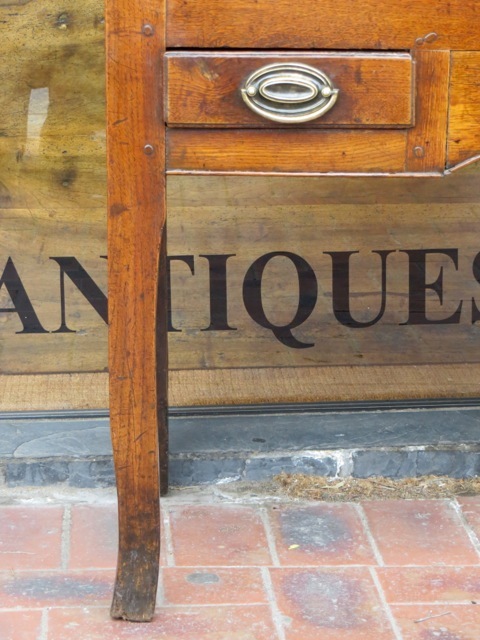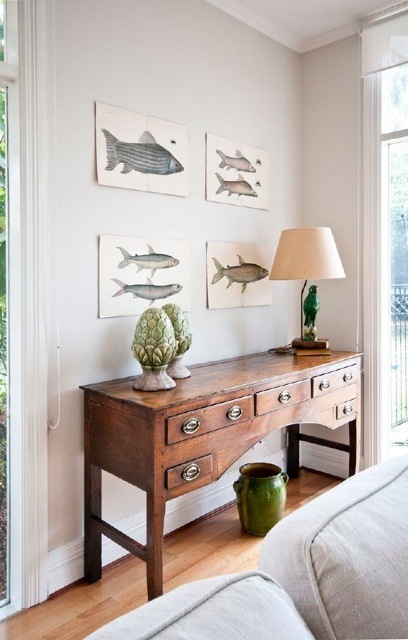18th Century English oak country Hepplewhite dresser base of small proportions – AA1857
The well patinated rectangular top having a groove moulded plate support above three long and two short quarter moulded drawers, retaining the original oval brass stamped handles, flanking the classic Hepplewhite central bowed frieze. Resting on a square lower shaped leg, joined by rectangular end stretchers.Having fantastic overall faded colours and well patinated wax finish.
This design resembling a low boy.
Note: The beautiful single plank of oak as a back board
H: 80 cm W: 156 cm D: 47.5 cm
Information on the country Hepplewhite low dresser/sideboard;
The rise of the middle class cabinet maker in the 18th century brushed off the stilted and pedantic of the chippendale era and ushered in a new world of ‘elegance and simplicity of design’. There began a shift away from the traditional forms of furniture championed by the first wave of english furniture designed, widely felt to be derivative of its continental counterparts. The disseminated production and design processes led to a change in the character reflecting a growing sense of national identity in culture and art. The sideboard was one of these designs. It was created originally as a means of displaying china but fell into the english use of hiding large amounts of alcohol within easy reach of the dining table. it was said by contemporaries that the English ‘accustomed by habit or induced by the nature of the climate, took more freely to the bottle than their french counterparts’.
The design theorems that are displayed in this piece are characteristically of the post chippendale era, headed by the likes of Hepplewhite and Gillow’s. The phrases that sum up this movement, as portrayed in the publication of the time were a focus on the ‘simplification of form and the refinement of detail.’ Perfectly represented by the delicate touches and symmetry. This is a piece in the later form with drawers replacing what would have been cabinets. The stylistic developments are also to be seen in the stamped handles, in a semi neo-classical design pushed by english stamp metal production and distinctive in its simplicity in comparison to its continental counterparts. This piece lies in a bracket of time in which the purest form of this this style of furniture was at its heyday and its simple elegance transcends time.
Henry Buckenham
